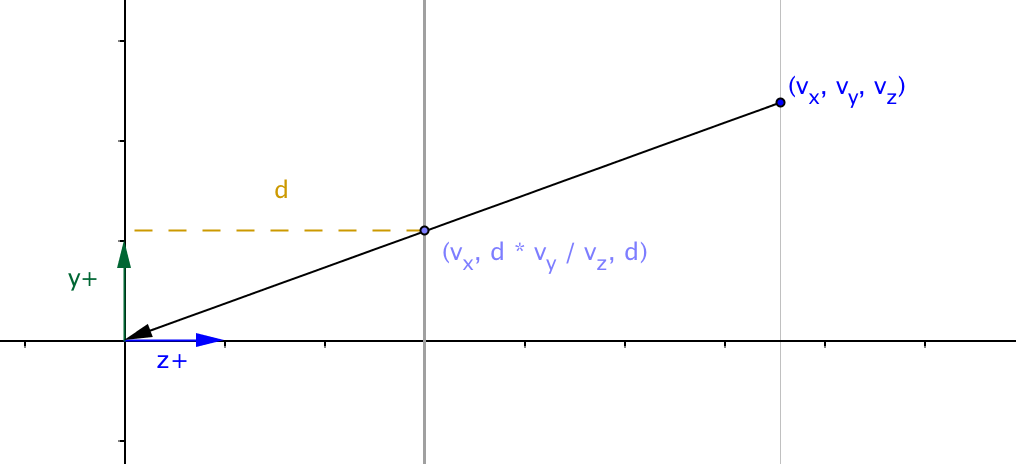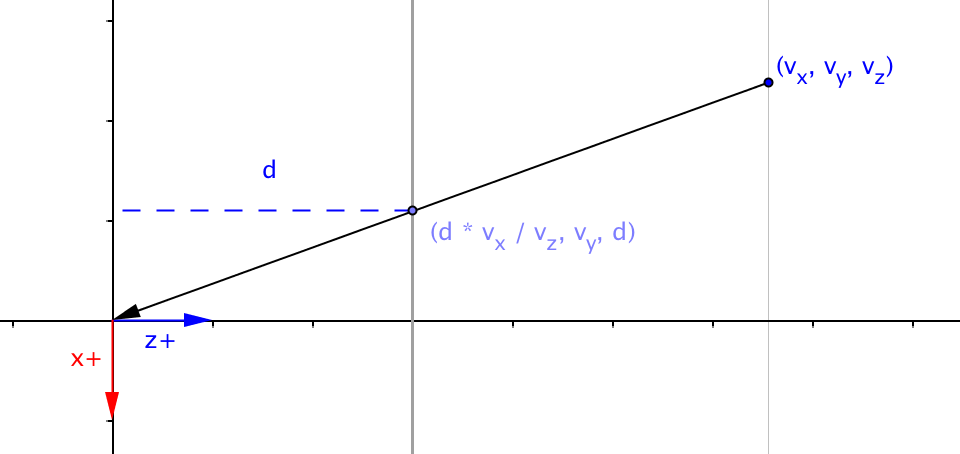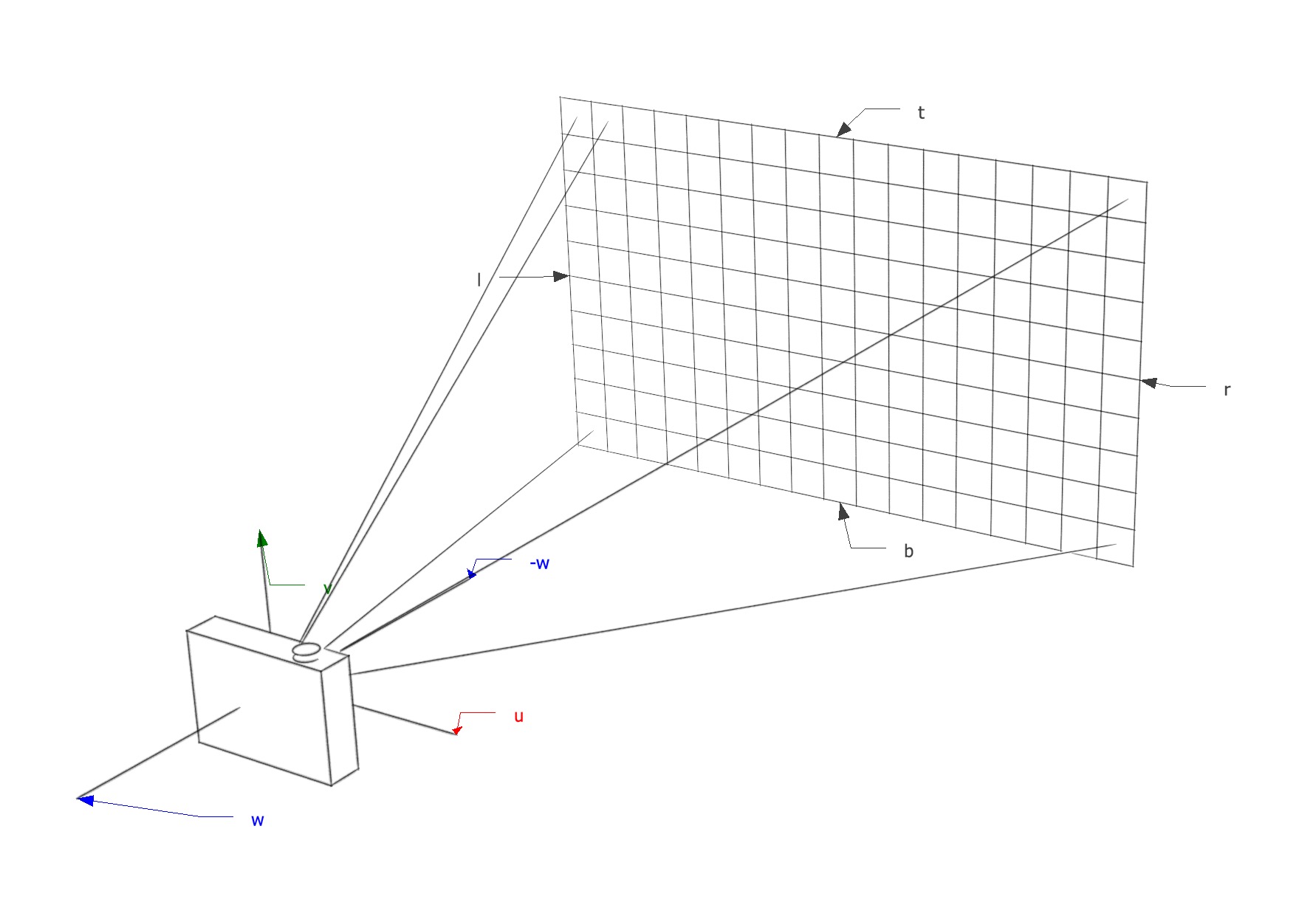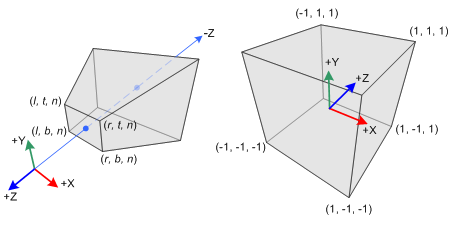As seen in projective geometry , the perspective phenomenon is where an object appears to be smaller the further away it is from the point of view.
We can again use some concepts of projective geometry to understand perspective projection, particularly the fact that any object in our 3D world is represented in the 4D projective hyperplane by the homogeneous coordinate
Perspective is implemented in 3D by using a transformation matrix that changes the value of
based on how far the object is (the -coordinate).
Now, let’s imagine that we want to project the points that exist in our world to the plane

Perspective Projection Y
By similar images, we can see that the projected value of the
The projected value of the

Perspective Projection X
The projected value of the
Summarizing:
Manipulating the last equation so that it has a common denominator:
The point above expressed in 4D homogeneous coordinates is:
Finally, the transformation matrix that transforms




